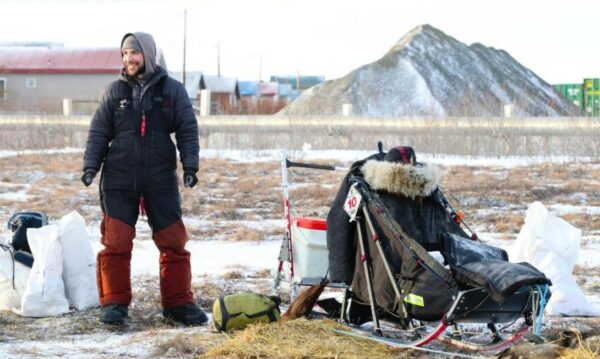
The Kuskokwim 300 is resuming its traditional route this year after taking an abbreviated route last year. The race is once again looping through the halfway point of Aniak, but the checkpoint won’t quite look like years past. That’s because of new race rules, and because the village has been hit hard by COVID-19.
Aniak, the usual halfway checkpoint of the Kuskokwim 300 Sled Dog Race, is home to the race’s reigning champion, Richie Diehl. Diehl grew up in the village surrounded by mushing. His dad raced, and his mom sometimes drove him to preschool using the dog team. Diehl said that he had become accustomed to going through Aniak and strategizing his K300 race around the usual stop.
But last year, the race held its halfway point in Bethel because most of the upriver villages were closed due to COVID-19. That also means that Diehl’s parents didn’t get to see their son during his winning race.
“I think that was one of the biggest things. My folks didn’t even get to see that team,” Diehl said.
RELATED: These four K300 mushers are really good friends and also each other’s top competition
But this year race organizers worked with local health officials to create a new mitigation plan that they think can safely take the race back through the villages. That includes mandatory testing and vaccination for all mushers, handlers, staff, and volunteers.
K300 Race Committee Member Erich Kuball lives in Aniak and runs the checkpoint there. He said that usually the race coming through Aniak is a big party for the community. There’s a fire pit near the check point, and elementary school students do a unit on the K300 and interview the mushers. Their projects are hung in the checkpoint building, where people donate tables of food and hang out for the day. Lots of people volunteer.
“We look forward to it every year,” Kuball said.
But this year, the Aniak checkpoint, along with all the race checkpoints, will look a lot different. That’s because the region is currently experiencing its highest surge in COVID-19 cases of the pandemic. Race organizers have closed the buildings to everyone but race volunteers and mushers. Spectators will have to remain outdoors and are encouraged not to gather. And in Aniak, students haven’t been able to do a unit on the K300; up until this week, the school had been closed due to high rates of COVID-19 in the village.
RELATED: The K300 starts Friday and it will look a bit different this year. Here’s what to know.
Kuball said that almost 20% of the village contracted COVID-19 just in January 2022. But he said that despite this, the race will be a bright spot in the community’s year.
“In general, we are all looking forward to the race. And we do want to encourage people to come and watch the race, but be as respectful to COVID conditions as they can,” Kuball said.
For his part, hometown hero Diehl says that he’s excited that the race will be going back through Aniak.
“I think that’s the cool thing, though, this year is we’re able to do a normal route and do it safely,” Diehl said.
And he can’t wait to show off his winning team to his family and friends back home.
“That’s something that I’ve always wanted to do,” said Diehl.
This year’s K300 starts at 6:30 p.m. on Friday, Jan. 28.




